-
 Bitcoin
Bitcoin $95,514.7938
-1.03% -
 Ethereum
Ethereum $1,827.9639
-0.58% -
 Tether USDt
Tether USDt $1.0001
-0.02% -
 XRP
XRP $2.1950
-0.87% -
 BNB
BNB $589.0262
-1.67% -
 Solana
Solana $146.8873
-1.32% -
 USDC
USDC $1.0000
0.00% -
 Dogecoin
Dogecoin $0.1734
-3.25% -
 Cardano
Cardano $0.6903
-4.43% -
 TRON
TRON $0.2478
0.25% -
 Sui
Sui $3.2793
-1.67% -
 Chainlink
Chainlink $14.1324
-2.40% -
 UNUS SED LEO
UNUS SED LEO $9.1326
2.34% -
 Stellar
Stellar $0.2697
-1.41% -
 Avalanche
Avalanche $19.9624
-4.69% -
 Toncoin
Toncoin $3.0797
-2.72% -
 Shiba Inu
Shiba Inu $0.0...01281
-3.32% -
 Hedera
Hedera $0.1777
-3.57% -
 Bitcoin Cash
Bitcoin Cash $356.6929
-3.52% -
 Hyperliquid
Hyperliquid $20.7629
0.09% -
 Litecoin
Litecoin $86.5019
-0.85% -
 Polkadot
Polkadot $3.9740
-3.84% -
 Dai
Dai $1.0000
-0.01% -
 Bitget Token
Bitget Token $4.3505
-0.77% -
 Monero
Monero $275.6877
-1.30% -
 Ethena USDe
Ethena USDe $1.0005
-0.02% -
 Pi
Pi $0.5948
1.17% -
 Pepe
Pepe $0.0...08171
-3.39% -
 Uniswap
Uniswap $5.0657
-2.42% -
 Aptos
Aptos $5.1188
-2.52%
Are digital currency cold wallets safe?
Hardware wallets provide enhanced security for crypto storage by safeguarding keys offline in tamper-proof devices, which effectively mitigates the risks associated with online connectivity.
Jan 12, 2025 at 12:58 am

Key Points:
- Understanding Cold Storage: The Basics
- Evaluating Hardware Wallets: Security Features and Usability
- Exploring Software Wallets: Accessibility and Convenience
- Assessing Custodial vs. Non-Custodial Solutions
- Enhancing Cold Wallet Security: Best Practices
Step 1: Understanding Cold Storage: The Basics
Cold storage refers to a method of storing cryptocurrencies offline, effectively isolating them from the internet and potential vulnerabilities. Cold wallets, unlike hot wallets, do not require constant connectivity to the blockchain, reducing the risk of hacking and unauthorized access. They come in various forms, including hardware wallets, software wallets, and custodial solutions.
Step 2: Evaluating Hardware Wallets: Security Features and Usability
Hardware wallets are physical devices designed to store cryptocurrencies securely offline. They offer robust security measures such as offline storage, PIN protection, and multi-factor authentication. Popular hardware wallets include Ledger, Trezor, and CoolWallet Pro, each providing varying levels of security and user-friendliness. Consider factors like tamper-proof designs, display screens, and support for multiple cryptocurrencies when choosing a hardware wallet.
Step 3: Exploring Software Wallets: Accessibility and Convenience
Software wallets, unlike hardware wallets, are digital applications installed on computers or mobile devices. They offer convenient access to cryptocurrencies but may be less secure due to their online connectivity. Exodus, MetaMask, and Electrum are examples of software wallets with varying features, including multi-currency support, exchange integration, and user interfaces. Assess the security protocols, reputation, and accessibility of software wallets before selecting one.
Step 4: Assessing Custodial vs. Non-Custodial Solutions
Custodial solutions entrust a third party, such as an exchange or brokerage, with the responsibility of safeguarding private keys and managing funds. They offer convenience and support but may compromise privacy and control over cryptocurrencies. Non-custodial solutions, on the other hand, grant users complete ownership and control over their private keys, emphasizing security and independence. Decide between these options based on your risk tolerance and preferences for convenience and control.
Step 5: Enhancing Cold Wallet Security: Best Practices
To enhance the security of cold wallets, implement best practices such as:
- Keeping the wallet's seed phrase and password confidential and separate
- Storing the wallet in a secure location, such as a bank safe deposit box
- Regularly checking for wallet firmware updates
- Avoiding exposing the wallet to suspicious links or phishing attacks
- Maintaining vigilance against malicious software or physical tampering
FAQs:
- Are cold wallets 100% secure?
No, cold wallets, while highly secure, are not completely immune to hacks or physical tampering. However, by implementing robust security measures and following best practices, the risks can be significantly minimized.
- What are the advantages of hardware wallets over software wallets?
Hardware wallets offer superior security due to their offline storage and tamper-proof designs, reducing the risk of hacking and unauthorized access.
- Can I lose my cryptocurrencies if my cold wallet is lost or stolen?
Yes, if the wallet's seed phrase is compromised or lost, the cryptocurrencies stored on the wallet may be permanently inaccessible.
- How often should I check for wallet firmware updates?
Regularly check for firmware updates to address potential vulnerabilities and improve security features.
- What precautions should I take to avoid phishing attacks?
Be cautious of suspicious links or emails claiming to be from wallet providers. Never share sensitive information, such as seed phrases or passwords, with untrusted sources.
Disclaimer:info@kdj.com
The information provided is not trading advice. kdj.com does not assume any responsibility for any investments made based on the information provided in this article. Cryptocurrencies are highly volatile and it is highly recommended that you invest with caution after thorough research!
If you believe that the content used on this website infringes your copyright, please contact us immediately (info@kdj.com) and we will delete it promptly.
- Bank Blockchain is emerging as a fresh player with a focus on real-world utility
- 2025-05-04 23:20:12
- Remittix (RTX) token raises over $14.7M during presale, targeting $300 price prediction in 2025
- 2025-05-04 23:20:12
- World (formerly known as WorldCoin) project - the flagship initiative from Tools for Humanity
- 2025-05-04 23:15:12
- Today's Top Crypto Gainers – ArcBlock (ABT), Aave (AAVE), Stratis (STRAX), Orbler (ORBR)
- 2025-05-04 23:15:12
- Thorchain Upgrades Its Decentralized Liquidity Protocol to Enable Native BTC-ETH Swaps
- 2025-05-04 23:10:12
- Pepe coin's recent price dip has sparked widespread attention
- 2025-05-04 23:10:12
Related knowledge
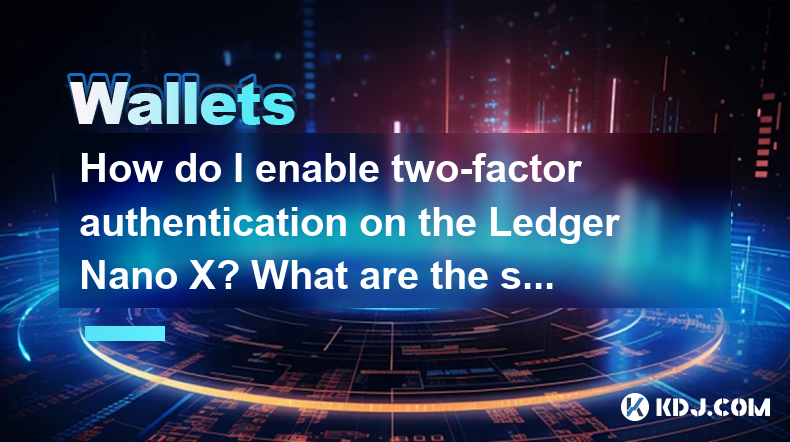
How do I enable two-factor authentication on the Ledger Nano X? What are the security options?
May 02,2025 at 09:49pm
Enabling two-factor authentication (2FA) on your Ledger Nano X is a critical step in securing your cryptocurrency assets. The Ledger Nano X offers robust security options that enhance the protection of your digital wealth. In this article, we will guide you through the process of enabling 2FA on your Ledger Nano X and explore the various security featur...

How do I export the Ledger Nano X transaction history? How long can the data be saved?
May 04,2025 at 07:21am
Introduction to Ledger Nano X and Transaction HistoryThe Ledger Nano X is a hardware wallet designed to store your cryptocurrency safely. It supports a wide range of cryptocurrencies and offers robust security features. One of the essential aspects of managing your cryptocurrencies is keeping track of your transaction history. The Ledger Nano X allows y...
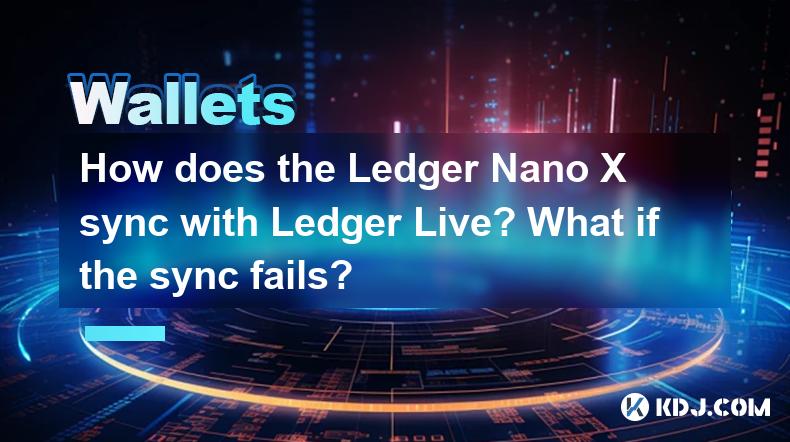
How does the Ledger Nano X sync with Ledger Live? What if the sync fails?
May 04,2025 at 12:07pm
The Ledger Nano X is a popular hardware wallet that allows users to securely manage their cryptocurrency assets. One of the key features of the Ledger Nano X is its ability to sync with the Ledger Live application, which provides a user-friendly interface for managing your crypto portfolio. In this article, we will explore how the Ledger Nano X syncs wi...
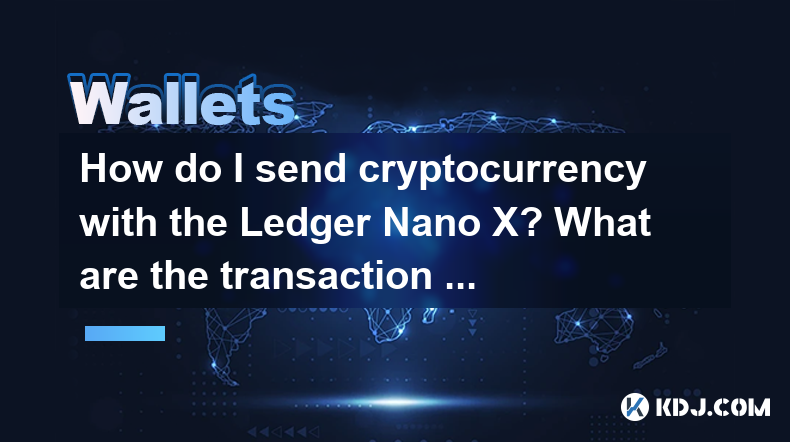
How do I send cryptocurrency with the Ledger Nano X? What are the transaction confirmation steps?
May 03,2025 at 05:01am
Sending cryptocurrency using the Ledger Nano X involves a series of steps that ensure the security and accuracy of your transactions. This process is designed to be user-friendly while maintaining the high level of security that Ledger devices are known for. In this article, we will guide you through the process of sending cryptocurrency with the Ledger...
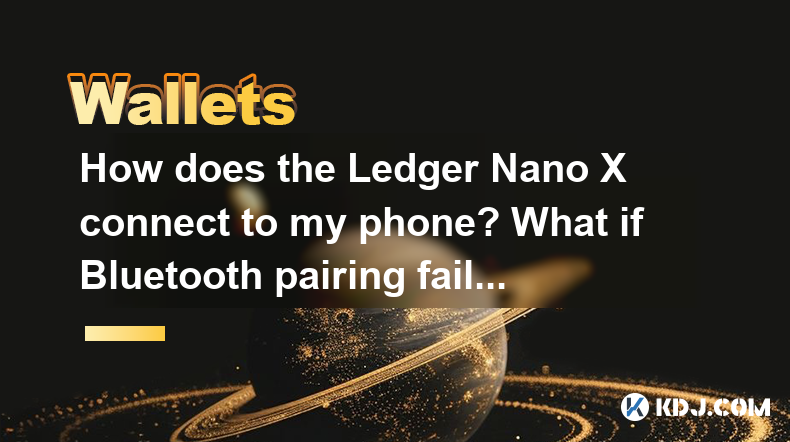
How does the Ledger Nano X connect to my phone? What if Bluetooth pairing fails?
May 02,2025 at 07:07pm
The Ledger Nano X is a popular hardware wallet designed to securely store your cryptocurrency. One of its key features is the ability to connect to your smartphone via Bluetooth, allowing for a seamless and convenient user experience. In this article, we will explore how to connect your Ledger Nano X to your phone and what to do if Bluetooth pairing fai...
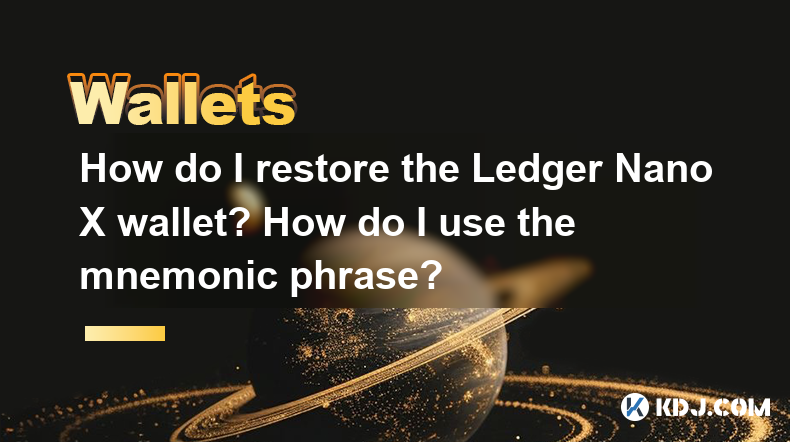
How do I restore the Ledger Nano X wallet? How do I use the mnemonic phrase?
May 04,2025 at 08:07am
Restoring a Ledger Nano X wallet and using its mnemonic phrase are critical processes for any cryptocurrency user. These steps ensure that you can recover your funds if your device is lost, damaged, or stolen. This article will guide you through the detailed process of restoring your Ledger Nano X wallet using the mnemonic phrase, ensuring you can acces...

How do I enable two-factor authentication on the Ledger Nano X? What are the security options?
May 02,2025 at 09:49pm
Enabling two-factor authentication (2FA) on your Ledger Nano X is a critical step in securing your cryptocurrency assets. The Ledger Nano X offers robust security options that enhance the protection of your digital wealth. In this article, we will guide you through the process of enabling 2FA on your Ledger Nano X and explore the various security featur...

How do I export the Ledger Nano X transaction history? How long can the data be saved?
May 04,2025 at 07:21am
Introduction to Ledger Nano X and Transaction HistoryThe Ledger Nano X is a hardware wallet designed to store your cryptocurrency safely. It supports a wide range of cryptocurrencies and offers robust security features. One of the essential aspects of managing your cryptocurrencies is keeping track of your transaction history. The Ledger Nano X allows y...

How does the Ledger Nano X sync with Ledger Live? What if the sync fails?
May 04,2025 at 12:07pm
The Ledger Nano X is a popular hardware wallet that allows users to securely manage their cryptocurrency assets. One of the key features of the Ledger Nano X is its ability to sync with the Ledger Live application, which provides a user-friendly interface for managing your crypto portfolio. In this article, we will explore how the Ledger Nano X syncs wi...

How do I send cryptocurrency with the Ledger Nano X? What are the transaction confirmation steps?
May 03,2025 at 05:01am
Sending cryptocurrency using the Ledger Nano X involves a series of steps that ensure the security and accuracy of your transactions. This process is designed to be user-friendly while maintaining the high level of security that Ledger devices are known for. In this article, we will guide you through the process of sending cryptocurrency with the Ledger...

How does the Ledger Nano X connect to my phone? What if Bluetooth pairing fails?
May 02,2025 at 07:07pm
The Ledger Nano X is a popular hardware wallet designed to securely store your cryptocurrency. One of its key features is the ability to connect to your smartphone via Bluetooth, allowing for a seamless and convenient user experience. In this article, we will explore how to connect your Ledger Nano X to your phone and what to do if Bluetooth pairing fai...

How do I restore the Ledger Nano X wallet? How do I use the mnemonic phrase?
May 04,2025 at 08:07am
Restoring a Ledger Nano X wallet and using its mnemonic phrase are critical processes for any cryptocurrency user. These steps ensure that you can recover your funds if your device is lost, damaged, or stolen. This article will guide you through the detailed process of restoring your Ledger Nano X wallet using the mnemonic phrase, ensuring you can acces...
See all articles





















































































